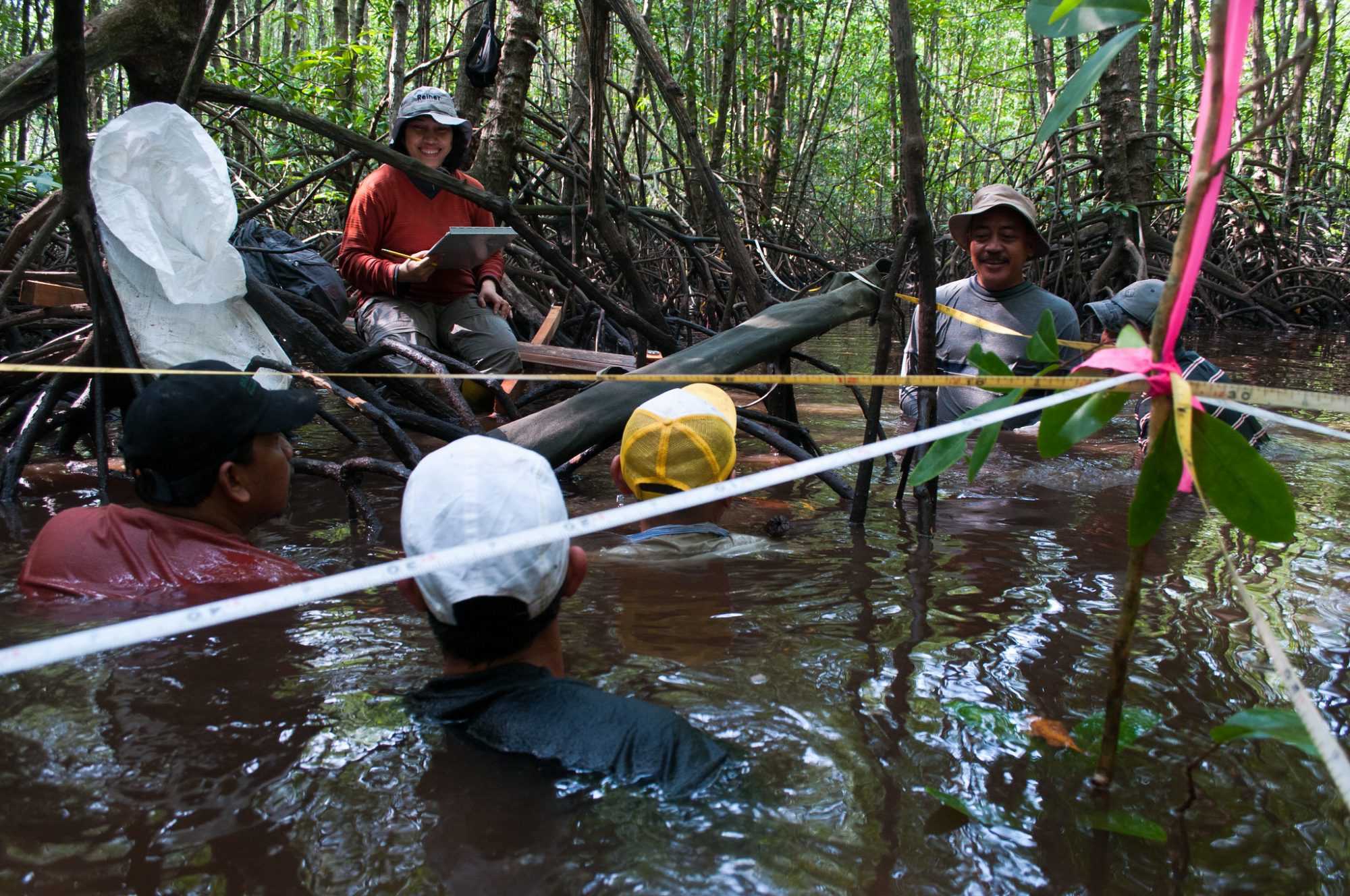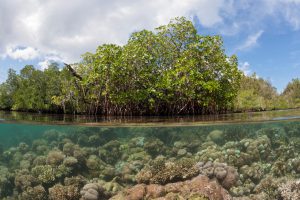Mangrove forests play a key role in maintaining healthy ecosystems. Living on the boundary between land and sea, these unique habitats support biodiversity, improve water quality and protect shorelines from flooding and erosion. They are also powerful carbon sinks, storing up to four times more carbon than rainforests.
Despite their importance, mangroves are disappearing at an alarming rate. Since 1996, more than 6% of the world’s mangroves have been cleared to make room for agriculture, aquaculture and coastal infrastructure such as roads and ports.
To slow the destruction, the United Nations launched the Decade on Ecosystem Restoration in 2020, which focuses on rebuilding mangroves and other habitats to improve biodiversity and mitigate the effects of climate change. But even as the plight of mangroves gains international attention, little is known about the factors that drive land-clearing in the first place.
A new study investigating these factors finds that mangrove loss rate varies widely by country and is influenced by how well each nation regulates its environment. Though the findings may seem intuitive, they emphasise the importance of improving government regulation rather than blaming local communities for mangrove destruction.
The factors contributing to mangrove loss likely reflect complex socioeconomic and political situations, says Mischa Turschwell, a marine ecologist with the Global Wetlands Project at Griffith University in Australia and lead author of the study.
Instead of tailoring their approaches, global-scale schemes often employ a one-size-fits-all approach to mangrove conservation that is not always successful. “To protect mangrove forests, you really need to develop solutions that consider differences in national context,” says Turschwell.
Protected areas alone will not be enough to protect mangroves
Turschwell and his colleagues started with maps showing spatial changes in the world’s mangrove forests between 1996 and 2016. Then, they modelled how various human pressures – like population density and forest fragmentation – may have influenced rates of mangrove clearing at global and national scales. They also tested whether a country’s regulatory strength affected the amount of mangrove habitat lost within its borders.
Over the 20-year period, the largest mangrove declines have occurred in Asia – specifically Bangladesh, Myanmar, India, Pakistan, Vietnam and Sri Lanka – and the Bahamas. While the smallest declines were in Fiji and New Zealand. Human population density was most likely to drive mangrove declines in Myanmar, Saudi Arabia and Indonesia, the study found.
Change in mangrove cover 1996-2016, by region
| Region | 1996 area (km²) | 2016 area (km²) | % Change |
| North & Central America & Caribbean | 22,702 | 21,072 | -7.18% |
| Southeast Asia | 46,789 | 44,060 | -5.83% |
| Middle East | 334 | 319 | -4.54% |
| East & Southern Africa | 7,630 | 7,329 | -3.95% |
| South America | 19,632 | 19,063 | -2.9% |
| Australia & New Zealand | 10,332 | 10,037 | -2.86% |
| South Asia | 8,701 | 8,492 | -2.4% |
| Pacific Islands | 6,410 | 6,327 | -1.29% |
| West & Central Africa | 20,107 | 19,857 | -1.24% |
| East Asia | 159 | 159 | +0.55% |
The analysis also uncovered several links between human pressures and resulting mangrove loss. Nations that had fragmented mangrove habitats in 1996 were more likely to experience greater mangrove loss by 2016.
The opposite was also true; areas with larger mangrove forests in 1996 saw smaller reductions over time, suggesting that earlier conservation efforts have a lasting impact on mangrove extent.
Fragmentation is a major driver of ecosystem degradation, explains Turschwell. “Fragmented forests are more accessible to humans, making them more susceptible to ongoing timber harvest and also damage from extreme weather events.”
The presence of protected areas slowed mangrove losses in Bangladesh, the Philippines, Pakistan and the United States, though the intensity of this effect varied among nations.
“We found that protected areas play a really important role in reducing loss, but especially in developing countries, where they are the primary, and sometimes only, means to reduce pressures on mangrove forests,” says Turschwell.
Surprisingly, mangrove clearing was not directly related to the strength of a country’s environmental regulation. But regulation did dampen the effect of certain pressures, such as population density. This phenomenon has also been observed in the Colombian Amazon and the World Heritage-listed Sundarbans mangrove forest, the authors explain.

With such variety in the drivers of mangrove loss, multiple solutions should be employed to reduce mangrove clearing, says Turschwell. For instance, adding community livelihood projects may enhance the benefits of protected areas in low-income countries.
Mangrove ecosystems are increasingly being hailed as nature-based solutions to climate change, helping meet the targets of global initiatives such as the Sustainable Development Goals (SDGs) and Aichi biodiversity targets.
Ironically, climate change itself poses big challenges to mangrove conservation, says Emily Landis, coastal wetlands strategy lead at The Nature Conservancy. Mass mangrove die-offs in remote northern Australia have been attributed to rising temperatures, with knock-on effects to surrounding ecosystems.
Protected areas alone will not be enough to protect mangroves, adds Landis. “Better management of mangroves in the future will have to take into account adaptation to rising ocean temperatures, inland migration zonation, and increased intensity of storms.”






